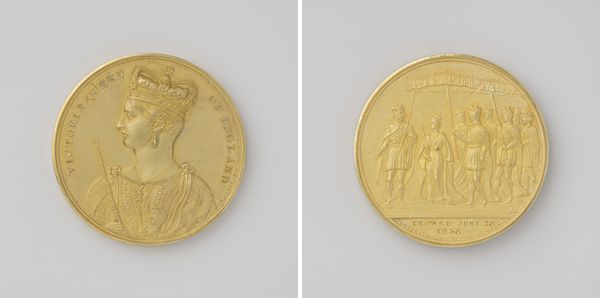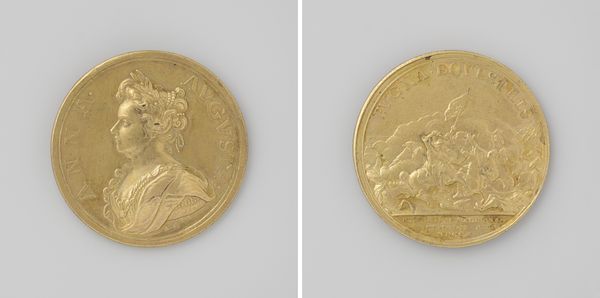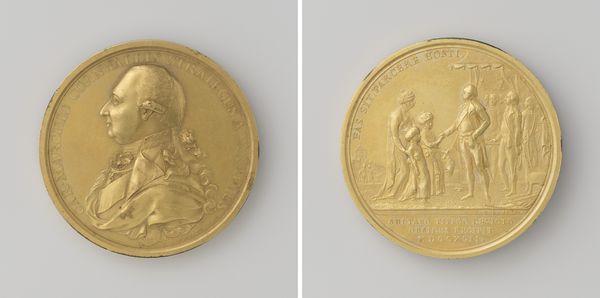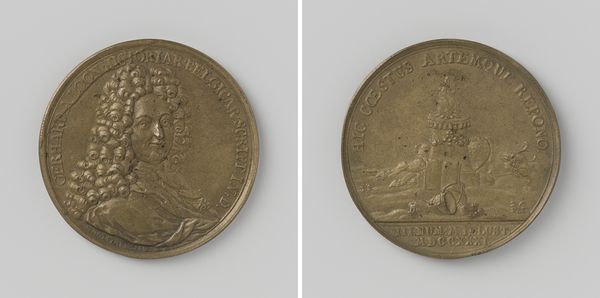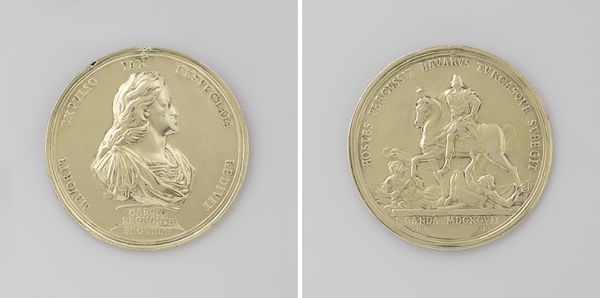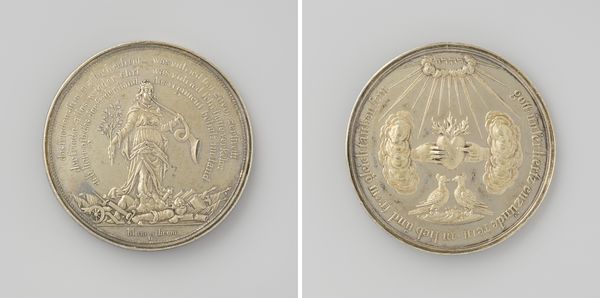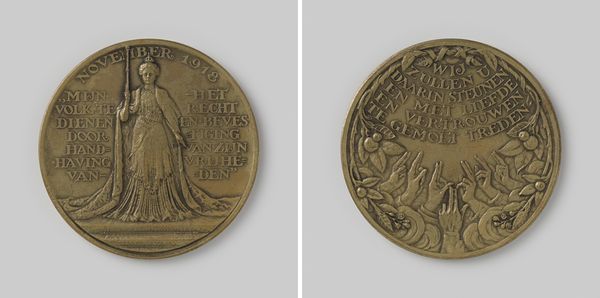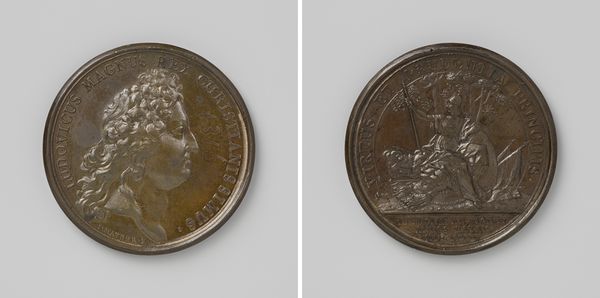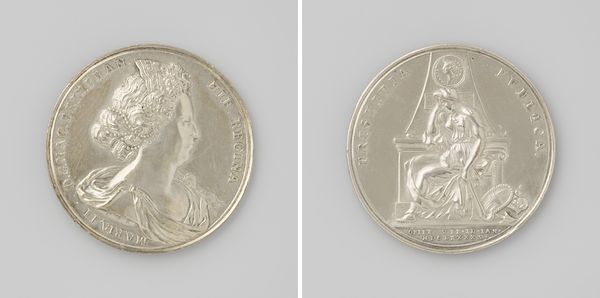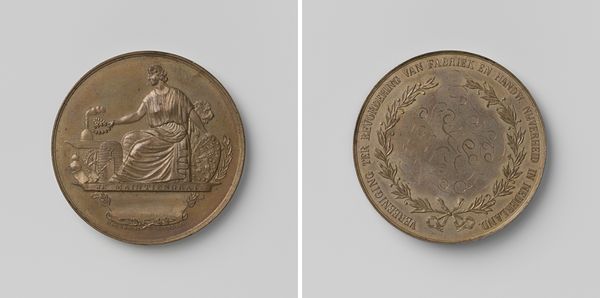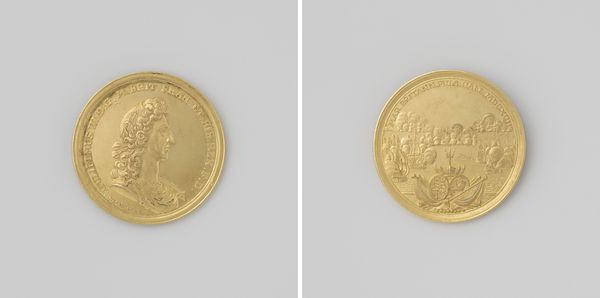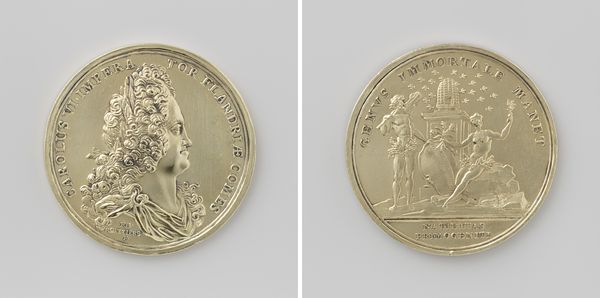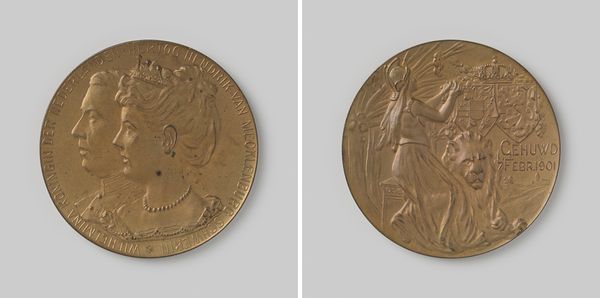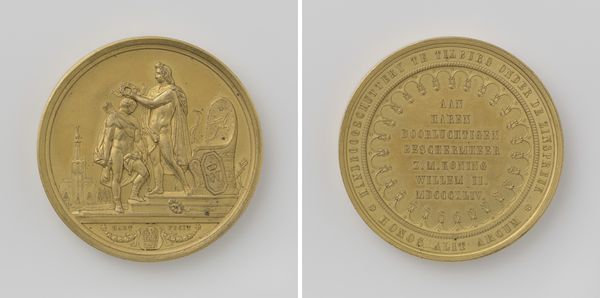
metal, engraving
#
portrait
#
metal
#
romanticism
#
history-painting
#
engraving
Dimensions: diameter 5.1 cm, weight 79.44 gr
Copyright: Rijks Museum: Open Domain
Curator: This piece is an engraving dating back to 1817. It's titled, "Overlijden van Charlotte Augusta, prinses van Engeland," or "Death of Charlotte Augusta, Princess of England". Editor: It's rather somber, even without knowing the specific history. The profile of the princess feels stark, and the reverse with the draped figures…there’s a heavy weight to it all. And on metal? Curator: Precisely. This piece is struck in metal, likely intended for wide distribution amongst the British public grieving the loss. The inscription alludes to scripture offering comfort in faith during sorrow, reflecting societal norms for grieving publicly as well. Editor: Absolutely. It highlights the intersection of grief, faith, and dynastic expectations. The Princess’ death after childbirth became a national crisis, raising concerns about succession. The engraving served as both a memorial and a medium through which people processed collective trauma tied to a woman’s body failing to fulfill her royal role. Curator: The sheer volume of these commemorative objects speaks volumes. It tells a powerful story about loss and legacy and demonstrates how these sorts of smaller tokens of sentiment acted as emotional technologies in 19th century England, uniting people. Did all the artists share same political leaning? It would be something to explore, considering it's role in production and how many iterations we might be talking about. Editor: Considering England at that point had an increasingly empowered Parliament after periods of autocratic royal rule, it begs us to reflect critically on these royal deaths and consider how they functioned to create cohesion under a figure that did not yield much material control for the first time in this region's political landscape. This contrasts sharply with continental autocracies; England presented a delicate balance in that century regarding popular loyalty and public expectation from those 'above'. Curator: Interesting, I wonder, the material then –metal– suggests permanence, resistance to decay even when sentiment might wane over generations. But what about those who couldn’t access such objects? What of the disenfranchised who, although deeply affected, lacked material means of engagement through commemorative practices? The work of mass producing this object, the physical labor, what do you think, given its purpose? Editor: It exposes gaps. Class differences become more evident as some could physically possess grief tokens while others, already marginalized, may be rendered completely absent within recorded responses – thus underscoring disparities during societal grieving. This absence within communal representation reveals the fragility and biased nature in defining “national” identity after all. It exposes vulnerabilities beneath regal appearances... Curator: Agreed. This object shows much more than a public outpouring, doesn’t it? It encapsulates socio-economic dynamics within this historical response to death and representation across differing social positions— a point to remember always. Editor: Indeed. There's so much folded into one token, from societal roles assigned according sex/gender positions as markers during mourning practices, touching everything in society from power distribution down to individual loss.
Comments
No comments
Be the first to comment and join the conversation on the ultimate creative platform.
